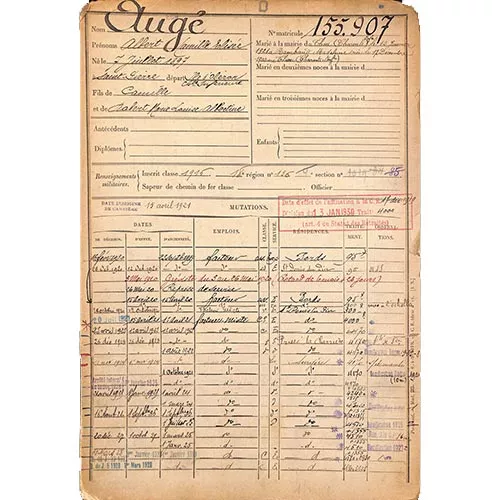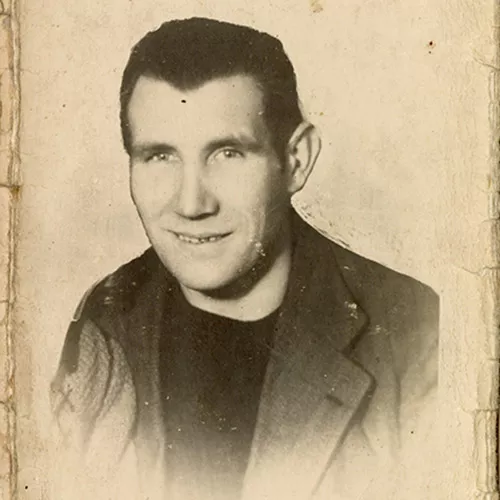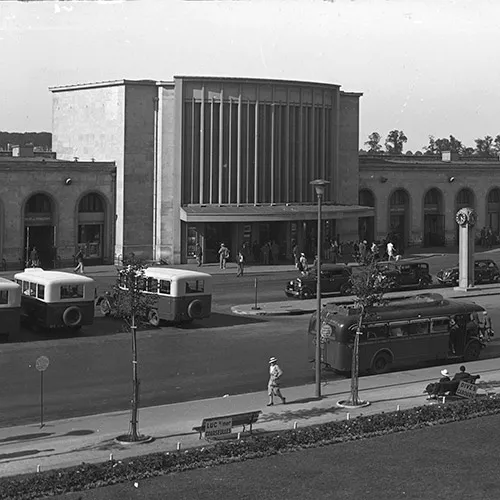80th anniversary of the Liberation: our role in commemorations
To mark the 80th anniversary of the Normandy landings, the Liberation of France and the Victory, SNCF lent its support to Mission Libération—a natural extension of our 30-year-long commitment to remembrance.
The history of SNCF is closely linked to that of France. And in World War II some 10,000 railway men and women were killed in action—bombed, shot or deported. To honour their sacrifice we wanted to be part of commemorative events in 2024 and 2025 celebrating the 80th anniversary of the Normandy landings, the Liberation of France and, ultimately, victory. Through our support for Mission Libération, SNCF was both a sponsor and a carrier for part of the audience attending international ceremonies in Normandy on 6 June 2024. And special exhibitions were also organized in a few of our train stations.
SNCF—official sponsor
Mission Libération at a glance
Mission Libération is a Public Interest Group set up by the French government to organize
events in 2024 and 2025 commemorating the 80th anniversary of the Normandy landings, the Liberation of France and the Victory of 1945. The programme honours “those who rose up, those who suffered, and those who fought to liberate France”.
Mission Libération events in 2024
Ceremonies include commemorations of both WWII landings (in Normandy and in Provence), and the Liberation of Paris (25 August 2024) and Strasbourg (23 November 2024). They also celebrate the role of the French Resistance, and many other events throughout France.
Events we support in 2024
Three exhibitions in SNCF railway stations are organized under the Mission Libération programme:
- Two shows at Caen station: “1944 - 2024, a memory to share. 80th anniversary of the Normandy Landings”, in partnership with the SIPA—Ouest France group; and “Caen station’s key role in railway resistance”, through 30 August 2024.
- An exhibition at Bayeux station: “80th anniversary of the Normandy Landings. Bayeux, summer 1944”, in partnership with the town of Bayeux, with photographs from the Imperial War Museum in London.
- An exhibition at Paris-Montparnasse station dedicated to railway workers in the Resistance and the 80th anniversary of the Liberation of Paris, in partnership with the Musée de la Libération de Paris, the Musée du Général Leclerc and the Musée Jean Moulin, from 15 May to 30 August 2024.
Tributes to the role of railway workers in the Resistance and their participation in active fighting during the Liberation are also planned.
Learn more about the exhibition at Paris-Montparnasse station
Remembrance at SNCF
Thirty years of tribute
We are committed to making our archives available online, supporting historical research, collecting oral archives, and honouring the memory of victims of deportation and the Shoah as well as the railway men and women who joined the French Resistance. Teaching this history is how we pass it on to new generations.
Railway men and women in WWII
The French Resistance was quick to call on the country’s 500,000 railway workers, whose work allowed them to move around easily and gave them access to useful information.
SNCF staff were issued a special armband with a green and red CF insignia (for chemin de fer or railways) that exempted them from curfews. And when coaches, trucks and private cars no longer had travel permits or fuel, railway staff could still travel by train. Their work assignments led them to cross the demarcation line separating Free and Occupied France.
Railway workers’ Green Plan for resistance
On the night of 5-6 June 1944, as the Allies headed for the Normandy coast, the BBC broadcast 210 “personal messages”—coded calls to roll out nationwide mobilization plans to deflect German forces during the Allied landings.
Resistance railway workers’ Green Plan was designed to bring the rail network to a halt through sabotage. It worked: in the 24 hours after D-Day, almost all rail lines covered by it were cut off. Upheavals continued throughout the summer of 1944, with 820 locomotives damaged. And when damaged tracks were repaired and put back in service, they were quickly sabotaged once again.
The Caen train station during World War II

Albert Augé
Station manager Albert Augé featured in “The Longest Day”, the book by Cornelius Ryan that inspired eponymous 1962 film about Normandy landings. That day, Augé's orders were to blow up the water towers at the station, bringing the steam locomotives to a halt without destroying them.
A veteran of World War I, he had joined the French Resistance and organized the collection of strategic information for the Free France government-in-exile. Twice awarded the Croix de Guerre, he was given special recognition by the military division and by SNCF, and was also awarded the Military Medal.

Madeleine Verly
A social worker at Caen station, Madeleine Verrly joined an intelligence network for the French Resistance. She carried out information and coordination missions, supplied fake IDs, organized safe houses, passed on messages to imprisoned Resistance fighters, distributed the clandestine publications, and played an active role in sabotage. In 1944, Madeleine Verly set up the Comité des œuvres sociales de la Résistance (COSOR) in the Calvados region to help the families of imprisoned, shot or deported Resistance fighters. She also supported the population during the bombings of June and July 1944. A pedestrian street in Caen is dedicated to her memory.

Émile Boutrois
Led by the French Communist Party, armed struggle and sabotage of German equipment developed around the depot. Three brothers—Émile, Achille and Michel Boutrois—were particularly active. On the night of 30 April to 1 May 1944, Émile Boutrois and another railway worker succeeded in shutting down the depot altogether. In retaliation, the Gestapo carried out a series of arrests targeting communists. Achille and Michel were imprisoned and executed on 6 June 1944 when news of the Normandy landings reached their captors, and Émile was killed in combat in 1945. Today a street in Caen is named after the Boutrois brothers.

Commemorative plaque at Caen station
The plaque honouring railway workers at Caen station bears 112 names:
- 18 died through repression, deportation, firing squad or mass executions
- 87 were killed by machine guns and bombs
- 7 died in combat or in captivity
Share the article